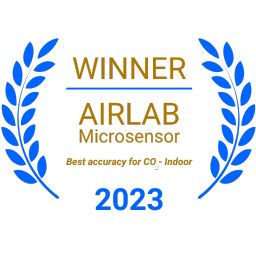The wine industry, and in particular its fermentation and storage processes, presents various risks to the health of workers due to the generation of noxious gases and vapours; therefore, proper monitoring of toxic odourless gases is crucial to maintaining the health of those working in this environment.
Why is it important to monitor CO2 in wineries?
In the wine industry, a gas is naturally produced during the alcoholic fermentation process, in which grape sugars are converted into ethyl alcohol (ethanol) in the presence of yeasts, producing large quantities of carbon dioxide (CO2 or carbonic acid).
This last gas is very necessary in oenology as it helps to control the oxygen content, protects the liquid and is largely responsible for the carbonic maceration of the wine.
However, it is not all positive and the main danger is that carbon dioxide is an odourless, colourless and almost imperceptible gas that can be lethal if released in large quantities.
What is wine fermentation vapour poisoning?
As mentioned above, carbon dioxide itself is not toxic, but it is toxic in high concentrations, and ethanol, a volatile organic compound (VOC), inhaled in large quantities can cause respiratory irritation and have depressant effects on the central nervous system.
One of the main hazards associated with CO2 is that it sinks to the bottom of the tank or confined space, displacing oxygen (O2) and becoming ‘trapped’ in the lower, poorly ventilated areas.
If a worker inhales high levels of CO2, dizziness, loss of consciousness and even death by asphyxiation can occur within minutes.
Indeed, and sadly, this is not the first time that a winery worker has died as a result of an accident at work caused by CO2 poisoning.
The importance of CO2 monitoring in wineries
Monitoring CO2 and other noxious gases such as VOCs that make up the wine toxic fumes is essential to ensure a safe working environment for workers in wineries and other alcoholic beverage industries.
CO2 build-up can occur rapidly in poorly ventilated areas, posing a serious health risk, with vats or storage tanks, fermentation rooms, barrels and bottling rooms being areas of primary concern within wineries.
An example of the danger of poisoning by toxic gases in confined spaces occurs during “tank devatting”, i.e. the removal of the pulp or pomace from the inside of stainless steel tanks after the fermentation process has been completed.
This task consists of the manual removal of the wine-soaked skins and pips that remain inside the tank – which is usually a confined space – and during which workers are exposed to the chemical agents present.
To protect their health, it is essential to comply with safety regulations, which is why CO2 monitoring in wineries is an essential preventive occupational measure.
In practice, there are CO2 monitors that allow indoor air quality to be known and the levels of carbon dioxide and volatile organic compounds to be monitored graphically and in real time. In this way, alarms can be generated as soon as the concentration of any of these exceeds the set limit, alerting those responsible to activate the appropriate ventilation systems.
Nanoenvi IAQ, the most accurate CO2 monitor
Nanoenvi IAQ is an IoT-based device capable of monitoring up to 7 air quality parameters in real time and generating customised alerts when the concentration of a pollutant exceeds the set threshold. 
With its compact size and light weight, this portable CO2 monitor is easily portable and requires no installation.
For CO2 measurement, Nanoenvi IAQ has been awarded by Airparif as “a very complete solution in the field of indoor air quality applications and the best performing sensor for CO2 measurements”.
Nanoenvi IAQ is therefore the best solution for those who want to monitor CO2 and other toxic fumes in wineries.











